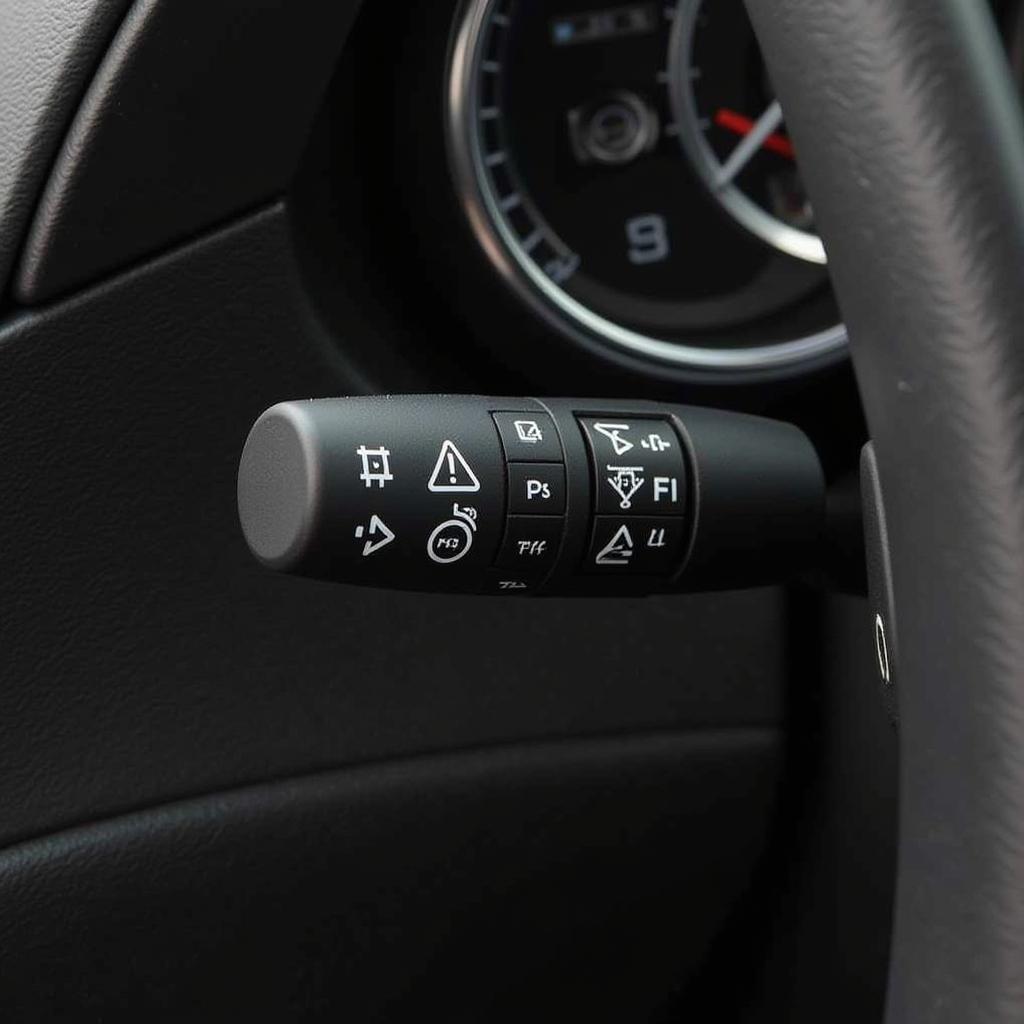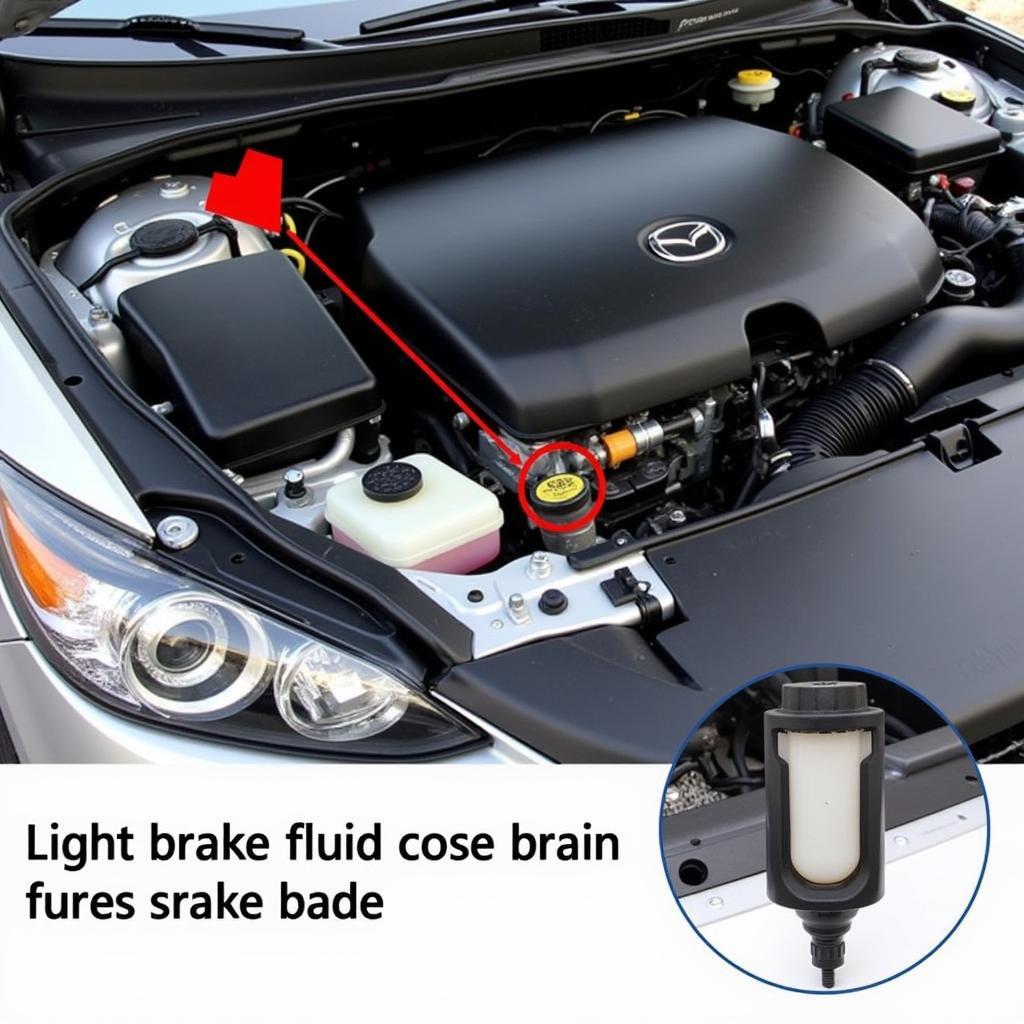The emergency brake warning light on your 2016 Mazda 6 is a safety-critical indicator that illuminates when the parking brake is engaged or if there’s a fault in the system. Ignoring this warning can increase the risk of accidents and potentially damage your vehicle. This comprehensive guide will walk you through the common causes of the emergency brake warning light appearing on your 2016 Mazda 6 and provide practical solutions to address them.
Understanding the Emergency Brake System
Before diving into troubleshooting, it’s crucial to understand the basics of the emergency brake system in your Mazda 6. Unlike the hydraulic service brakes, the emergency brake, also known as the parking brake, uses a mechanical cable system to lock the rear wheels. When you engage the parking brake lever, it pulls on this cable, applying pressure to the brake shoes or pads, preventing the vehicle from rolling.
 2016 Mazda 6 Emergency Brake Lever
2016 Mazda 6 Emergency Brake Lever
Common Causes of the Emergency Brake Warning Light
1. Engaged Parking Brake:
The most common and straightforward reason is simply that you haven’t fully disengaged the parking brake. Double-check the parking brake lever and ensure it’s completely released.
2. Low Brake Fluid:
The emergency brake warning light can sometimes be triggered by low brake fluid levels, as the systems share a warning light in many vehicles. Check your brake fluid reservoir and top it off if necessary.
3. Faulty Brake Fluid Level Sensor:
If the brake fluid level is adequate but the warning light persists, the sensor itself might be faulty. This sensor monitors the fluid level and triggers the warning light when it detects a low level.
 Brake Fluid Reservoir Location in a 2016 Mazda 6
Brake Fluid Reservoir Location in a 2016 Mazda 6
4. Worn Brake Shoes or Pads:
Similar to your regular brakes, the emergency brake system relies on brake shoes or pads that wear down over time. Excessively worn brake shoes or pads can trigger the warning light.
5. Stretched or Damaged Parking Brake Cable:
The parking brake cable connects the lever to the rear brakes. Over time, this cable can become stretched, damaged, or corroded, preventing the parking brake from fully disengaging and illuminating the warning light.
6. Electrical Issues:
Electrical problems, such as a blown fuse, a faulty switch, or wiring issues within the emergency brake system, can also trigger the warning light.
Troubleshooting the Emergency Brake Warning Light
1. Visual Inspection:
Begin by visually inspecting the parking brake lever, cable, and surrounding components for any visible signs of damage, wear, or corrosion.
2. Check Brake Fluid:
Inspect the brake fluid level and ensure it’s within the recommended range. If the fluid level is low, add the appropriate brake fluid to the reservoir.
3. Test the Parking Brake:
Find a safe and legal location to test the parking brake. Engage and disengage the parking brake several times while observing the warning light. If the light flickers or remains on, it could indicate a problem with the switch or wiring.
4. Seek Professional Diagnosis:
If the issue persists after basic troubleshooting, it’s essential to consult with a qualified mechanic specializing in Mazda vehicles. They have the expertise and diagnostic tools to identify and address complex issues within the emergency brake system.
Remote Diagnostic Services for Your Mazda
Advancements in automotive technology have paved the way for remote diagnostic services, providing convenient and efficient solutions for car owners.
“Remote diagnostics allow us to connect to your vehicle’s onboard computer system wirelessly,” says John Miller, a certified Mazda technician with over 15 years of experience. “This enables us to run comprehensive scans, pinpoint the root cause of the warning light, and even provide software updates or programming solutions remotely in certain situations.”
Conclusion
The emergency brake warning light on your 2016 Mazda 6 plays a crucial role in ensuring your safety and the proper functioning of your vehicle. Addressing the underlying cause promptly is essential. While some issues can be resolved with basic troubleshooting, more complex problems might require the expertise of a qualified mechanic. Don’t ignore this warning light – address it promptly to maintain the safety and reliability of your Mazda 6.
